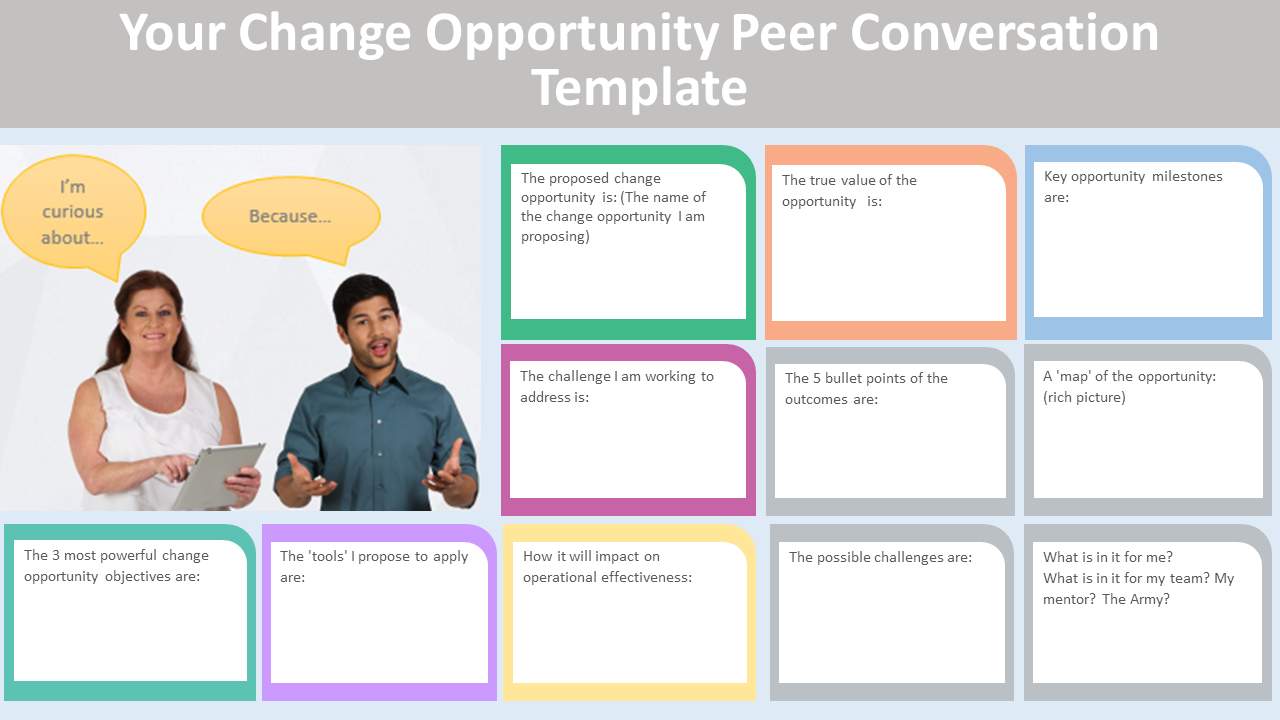77 Problem Solving with Initiative
Before you get started on this section, watch this quick conversation with Major General Stephen Porter, “If I Were a New Soldier”. As you listen, look out for tips on problem solving and innovation.
Problem Walk-around 2
You already know how to use the Problem Walk-around Process. Here is a quick reminder just in case.
You take a metaphorical walk around the problem from a whole range of different angles. You consider what others might notice if they were thinking about this. You consider who is in your work or social group that could help you gain clarity about the issues.
Here are your activity tips again, slightly altered as you have already worked on your change opportunity and you have been progressing your ideas:
-
1
Think about the opportunity for change you have begun to explore.
-
2
Imagine that you go back to where you have ‘hung’ your problem in the middle of the room or on a whiteboard.
-
3
From there consider the following questions, remembering that you already have considered these and you want to be moving ahead:
-
-
- How is this situation similar to others I have seen?
- How would someone else approach this?
- What experts could I call on to assist me in solving this problem?
- Where are some sources of authority in this field?
- How might other stakeholders see this situation?

Reflect
Now that you have taken a ‘walk’ around your problem, revisit your thoughts in your Reflective Journal and consider the ‘leads’ or ideas that have emerged as you have responded to the various questions.
Talking about the Initiative: Peer to Peer Conversations
Now that you have completed your Problem Walk-around 2 we want you to prepare for a conversation with a peer and perhaps your mentor.
Below is an example of a template that we developed and have used in many of our programs at QUT. We know this peer conversation process works and we hope that you develop it and make it your own! You can download a copy when you are ready to get started.

Before you get started with the peer to peer conversation, we recommend you consider the following:
- Start by keeping the principles of psychological safety and error-friendly learning in mind.
- Make sure you both have time to share and reflect.
- Use the completed Change Opportunity Peer Conversation template to guide your conversation.
- Remember you will gain as much by listening as by sharing!
By the way, if you watch the video below you will find some extra tips and insights about decision making and planning that may help you.
Before you go….
We hope that after you have had this practice at using the template with one of your peers, you will continue to use it and develop it as part of your future professional practice. Of course each time you want to use it you can print more copies and perhaps even track your progress We suggest you write the date on each version and also with whom you were chatting!
-
-


